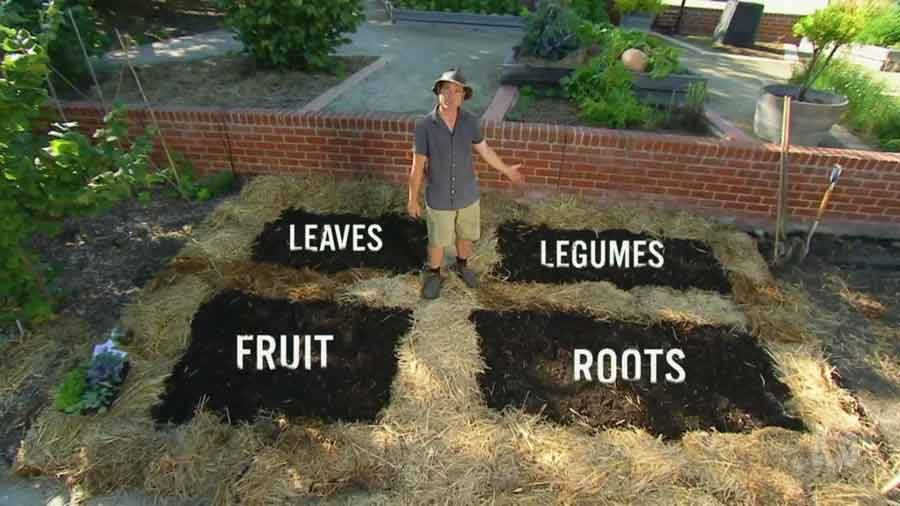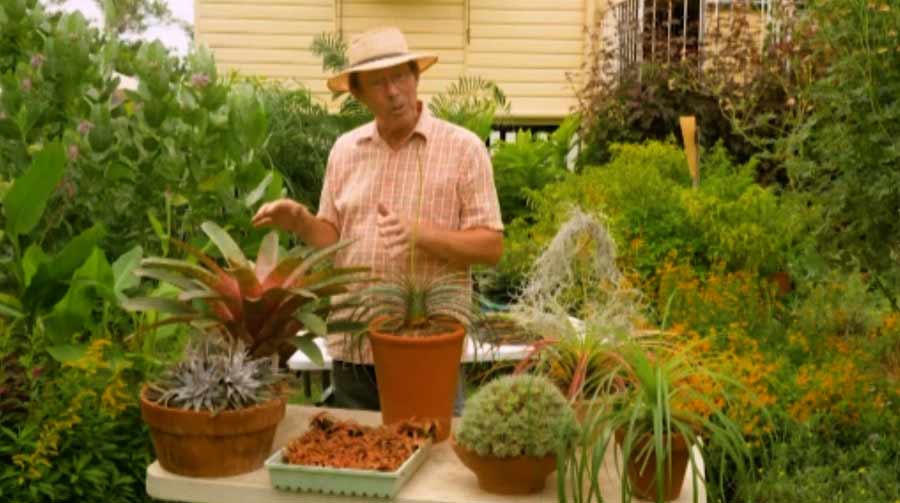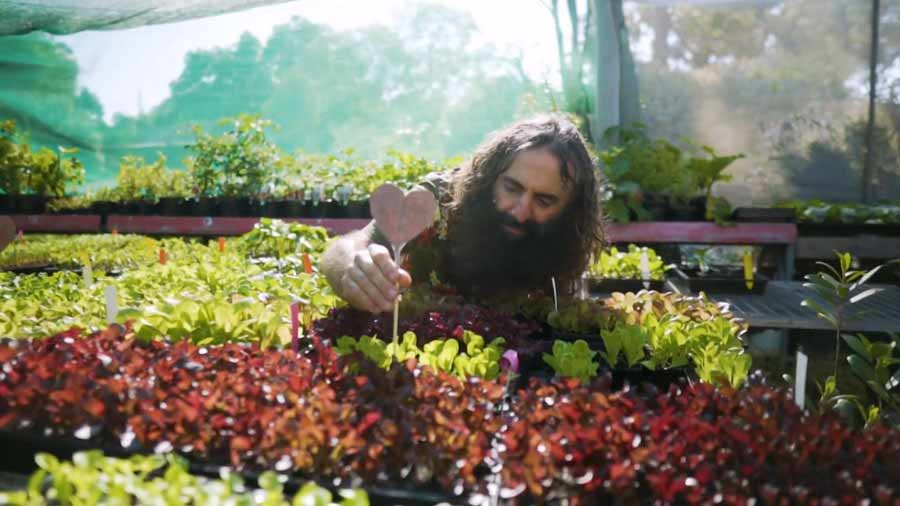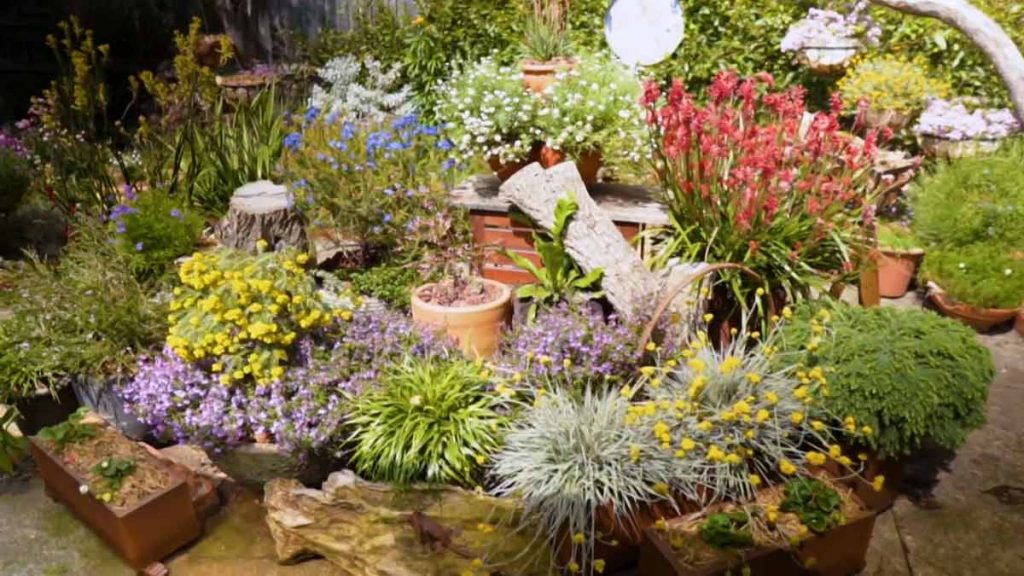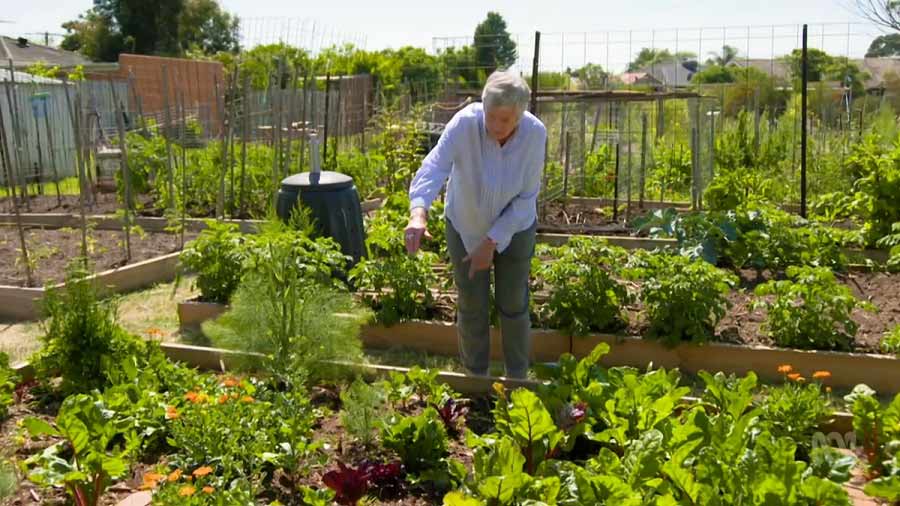Gardening Australia episode 16 2020: Jerry Coleby-Williams checks out a successful wildlife corridor, Sophie Thomson visits a farm growing botanicals for beauty products, Tino Carnevale demonstrates crop rotation and Jane Edmanson makes a kokedama.
Gardening Australia has always provided practical, trustworthy and credible gardening advice to inspire and entertain. Inspiring, entertaining and full of practical advice, join Costa Georgiadis and the team as they unearth gardening ideas, meet avid gardeners and look at some of the most inspiring gardens from across the country.
Gardening Australia episode 16 2020
Food is Free
Costa Georgiadis meets the gardener behind the ‘Food is Free’ movement. Food insecurity is a phrase often applied to developing countries, but it’s easy to forget that there are people within our own communities that may not be able to readily access and experience fresh, healthy, organic food for a variety of reasons. For backyard vegie growers, the problem is often the opposite – how can we sustainably manage excess produce and engage with our community? It can be as simple as sharing – gardeners providing their produce for free to those that need it most.
It was this philosophy that led Lou Ridsdale to found the Ballarat “Food is Free” Laneway in 2014 – initially just a table or two with Lous’ excess produce and a couple of painted planters popped out in the laneway adjacent to her place. Lou and her mates had a BBQ and a yarn, erected the now well-loved #FOODISFREE sign in the Laneway, and hoped the community would engage and take the produce that they might need. And, slowly, they did.
FAQs – Composting clothes | Native sugarbag honey | Indoor natives
Gardening Australia presenters answer commonly asked gardening questions.
Beauty of Botanicals
Sophie Thomson visits an organic farm in the Adelaide Hills and discovers the botanicals used to make beauty products. The dry climate and unpolluted atmosphere of the Adelaide Hills provided the perfect environment for growing herbs and roses organically.
The rich soils of the area also add to the viability of the area for a biodynamic farm. Here a wide range of plants are grown for their cosmetic uses, including English lavender (Lavandula angustifolia), roses (both David Austen and Gallicas), common marshmallow (Althaea officinalis), elderflower (Sambucus nigra), lemon verbena (Aloysia citriodora), birch trees (Betula pendula) and German chamomile (Matricaria chamomilla). Altogether there are approximately 30 crops and more than 3000 roses.
Crop Rotation
Tino Carnevale explains crop rotation and how to use it to plan your autumn plantings. Crop rotation is a way of minimising pests and diseases in your garden by not planting vegetables from the same family in the same soil year after year. It looks at the nutrition needs of crops to make gardening easier and more successful. At The Patch, Tino has created a 4-bed rotation system.
Growing Microgreens
Jane Edmanson shows how to grow your own microgreens. Microgreens are super-trendy right now. They’re simply green leafy vegetables or herbs that are harvested when they’re really young.
Highway Haven
Jerry explores a wildlife corridor designed to link two halves of a forest and provide safe passage for animals over a busy road. Jerry Coleby-Williams visits Karawatha Forest with Professor Darryl Jones, Ecologist at Griffith University, to see the successful project they have been working on creating a wildlife corridor. Located 18km from the centre of Brisbane, Karawatha Forest includes dry Eucalypt forest and wet heathland.
A bridge has been built and planted to create a seamless transition from the forest on one side of the road to the other. Small birds, such as fairy wrens, finches, silvereyes and robins can now take cover in the vegetation as they go from tree to tree. The first plant species used were bottlebrush (Callistemon viminalis) and wattles, which grew quickly to provide shelter; while those early wattles are now dying, they provide habitat for animals such as lizards in the leaf litter they have created. Poles were ‘planted’ as substitute trees to allow marsupials such as the squirrel glider to travel across the space until the larger species of grey gums (Eucalyptus punctata) grew sufficiently.
Kokedama
Jane gets her hands dirty making Kokedama – Japanese moss balls. Kokedama’s star has been on the rise for a while and Jane shows us how easy it is to make these appealing Japanese moss balls – which is the direct translation. Kokedama are fun to make and a talking point when they’re hanging around the house!
The Pocket-Sized Patch
Millie visits a small-scale kitchen garden that produces a productive bounty thanks to a great design, including keeping quails as a small space alternative to chickens!
A New Tree
Josh is planting two dwarf variety Red Flowering Gums in his garden and gives tips on how to give these natives the best start in life.
My Garden Path – Clare James
Clare James is an artist whose work reflects the close attachment she and her family have with their Yarra Valley garden.
